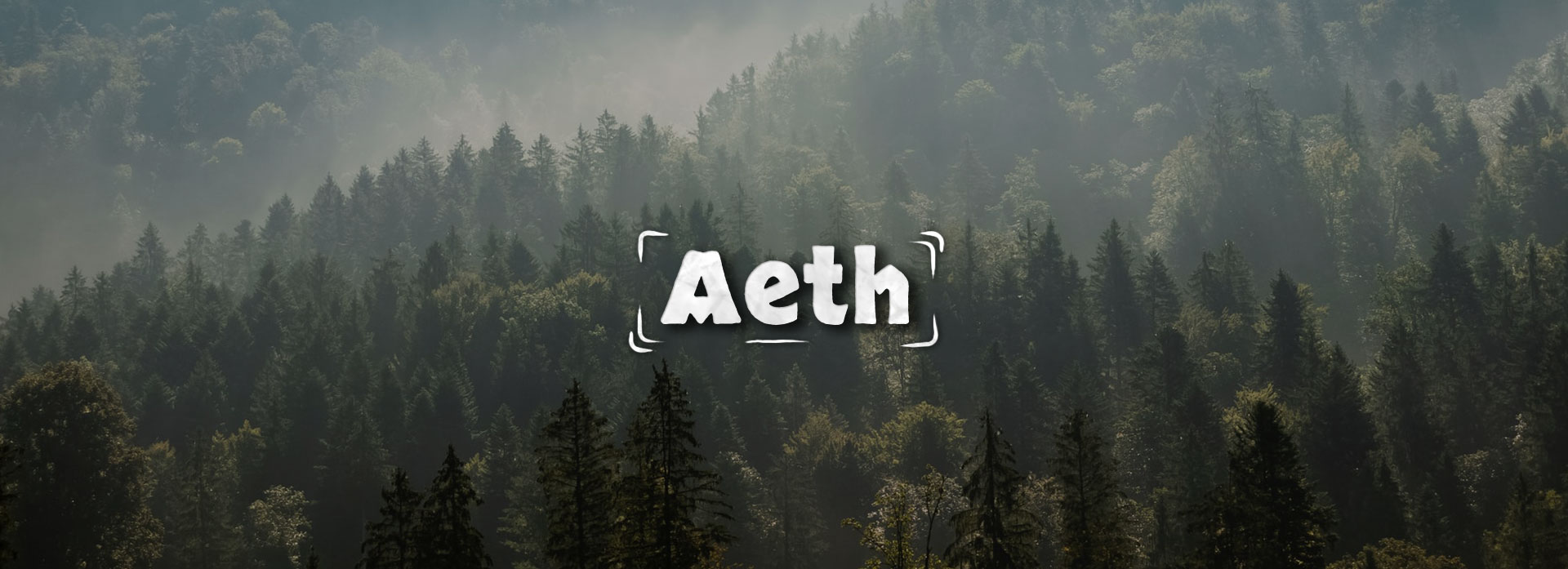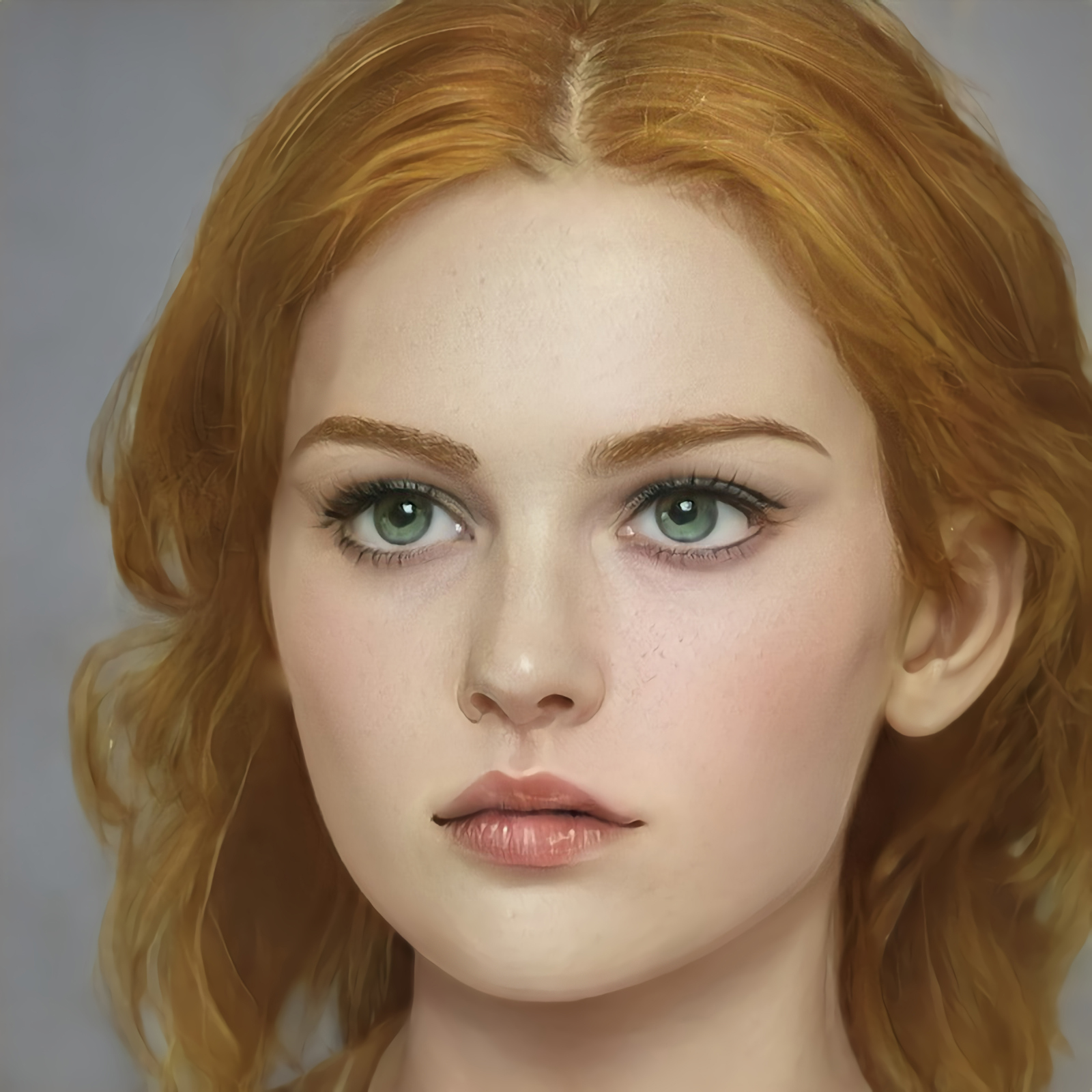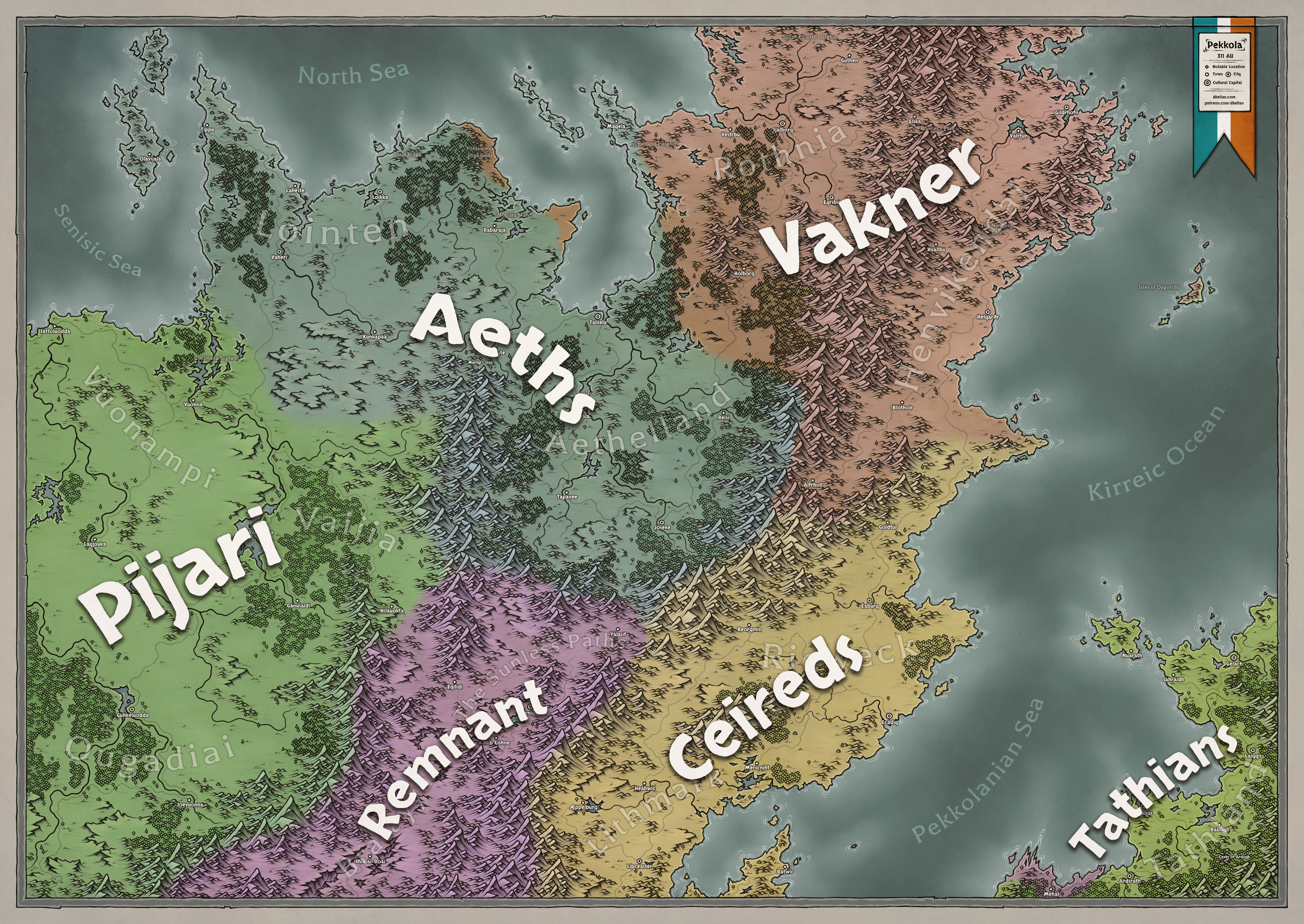Aeth
Guardians of the Groves
I hope that we've learned from our mistakes. Next time, when foreign forces cross the mountains and enter our lands, we will stand united against a common threat.The Aeths are a people native to the forests and wetlands of Lointen and Aethelland, but they've got a significant presence also in Rothnia and Vuonampi. Their people have a long-standing reputation as excellent skirmishers and masters of harassment tactics, but when it comes to running a cohesive country, their ambitious nature can get the better of them, resulting in larger Aeth kingdoms often fracturing into smaller states.
Appearance
Centuries prior to their arrival in their present homeland, the Aeths looked more similar to their Pijari neighbours to the south, but after settling down in Aethelland, they developed close relations with the Vakner. The Aeths of the 4th century are a result of generations of crossbreeding, and they now resemble their northern neighbours more than their southern ones.Heads
Typically the Aeths are known for being one of the palest folk in the world. Their facial features are soft and round, often appearing less intimidating than the more square-jawed Vakner and Ceireds.The colour of an average man or woman's hair ranges from various lighter shades of brown, to red and fair. Most Aeths have an eye colour in some shade of blue, but green-eyed folk are also a common sight.
To the embarrassment of Aethish men, their beards are more patchy and grow slower compared to most other peoples of Pekkola.
An Aethelman typically possesses a red or a thick linen-haired mane with a scraggly patchy beard and a set of blue or emerald eyes. They are taller than most in Pekkola, and I've never seen a person run as fast as an Aeth.
A whole unit of them charging and readying their javelins is a terrifying sight to behold.
Culture
Ambition, independence, and the pursuit of being the very best are vital aspects of Aethish culture. Both a child's parents and their society as a whole teach that every son should strive to be a greater version of their father. Young men are expected to train and work hard to become better at their craft and to master the use of a weapon. The achievements of their family's daughters should also outshine those of their mothers. Women are to learn from their parents' mistakes in hopes that they could bring up a better and stronger new generation which in turn would try their best to be even greater.
Boat Burning
Throughout the year, Aeth families gather the remains of the fish they've consumed, and they store them in safe locations. Every year during the eve of the summer solstice, the villagers will gather all of the remains, toss them in an old fishing boat, and the community will light the whole thing on fire to send the spirits of the dead fish back into the sea. After the festivities, the community is expected to support the owner of the burnt boat by donating their time or resources so that a new fishing boat could be built.You'll need to learn Rothnian even when speaking to the Aeths there and if you're planning on going east, make sure to brush up on the most archaic saying we've got.
Regional Differences
Aeths fall into three separate subcultures, all of which have their unique quirks and dialects. These divides formed overtime when people settled into their regions and interacted with neighbouring cultures. The Aeths in the western parts of Rothnia, for example, embraced words, names, and other aspects from Vakner culture while their brothers in Lointen did all they could to preserve the purest form of their language. The three subcultures all share a love of pinehouses, a specific type of building that contains an outdoors kitchen and dining area, as well as a large wood-fired hot tub. The methods of their construction and their layouts vary from region to region.The Three Tongues
Athellandic - Less conservative than Lointer, but not as keen on loaning words as West Rothnian. Athellandic is the most innovative of the tongues, but they prefer coming up with new words if they feel that a loanword sound too unfamiliar.Lointer - The Lointers don't like change. They believe that their gods only understand them if they speak to them only in the most archaic of words. Because of their convictions, they might not get along with those who don't speak their tongue.
West Rothnian - Due to their proximity, trade, and other intercultural relations with the Vakner of Rothnia, the Aeths on the western shores of that land have adopted many of their neighbour's words and traditions. Even aspects of their grammar have shifted to become more Vakner.
Warfare
Skirmishing and harassment tactics are something the Aeths have mastered. Their proximity to the plains of Vuonampi has given them access to swift horses for harassment tactics and their natural traits which make them great long-distance runners allow them to move through the woods with haste. A favourite tactic of theirs is to lure a larger enemy force close to a heavily wooded area. From the forests, the Aeths will launch their surprise raids, hurl their javelins, and run back into foliage where they will difficult to follow.Legends
From what scholars have been able to discern from ancient oral legends and tales, the Aeths migrated north after twisted creatures with the upper halves of humans and the bottom halves of either a horse or elk invaded them from the south. These monstrosities were said to wield large bows and lances and on their heads were great antlers which could serve as an additional backup weapon. By now the Aeths have realized that the monsters were just the Pijari, a people fond of their horses and domesticated elk. Still, many Aeths have refused to believe that mere men could have forced them out of their homes and so they vehemently believe that the ancient legends were right and that some wicked creatures assist the Pijari. This belief was further reinforced after the Pijari successfully halted the Rahyamin Empire's advance into their land, ending the conquest of Pekkola.
Athellandic Names
Male
Niglas, Lembitu, Tambet, Ülo, Ülje, Ülle, Kolle, Eno, Enno, Munte, Tabbe, Taepke, Jalte, Mele, Meelis, Kaeke, Kekke, KoitFemale
Vilja, Tuuli, Talve, Suve, Hämarik, KairiSurname
Nihaste, Paunaste, Talvik
Lointish Names
Male
Coming soon (hopefully)!Female
Coming soon (hopefully)!Surname
Coming soon (hopefully)!
West Rothnian Names





I love this world, so much depth! Your use of the subscribers function to give insight from different cultures is fantastic. I've been trying to figure out if ppl could self-assign more than one group, and you've done it beautifully. I have 2 big, secretive factions and lots of little secret hidden groups, and it's all going to work out great in the end, I just know it! But if getting there is half the fun, I must be in the other half. Also, I'm a big artbreeder fan, love to see it!